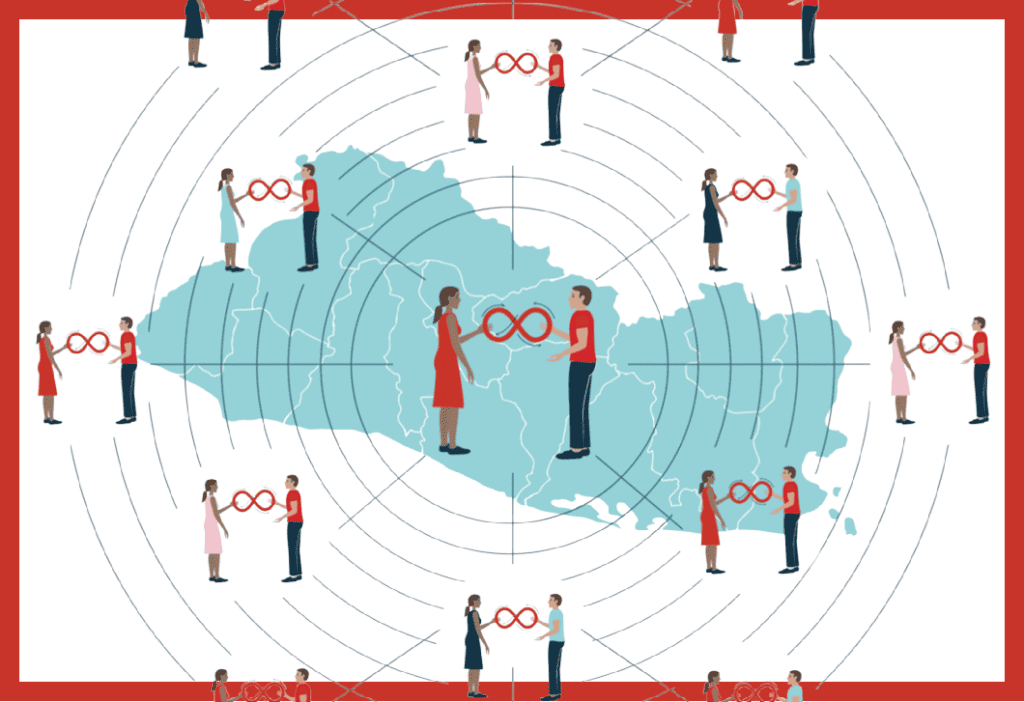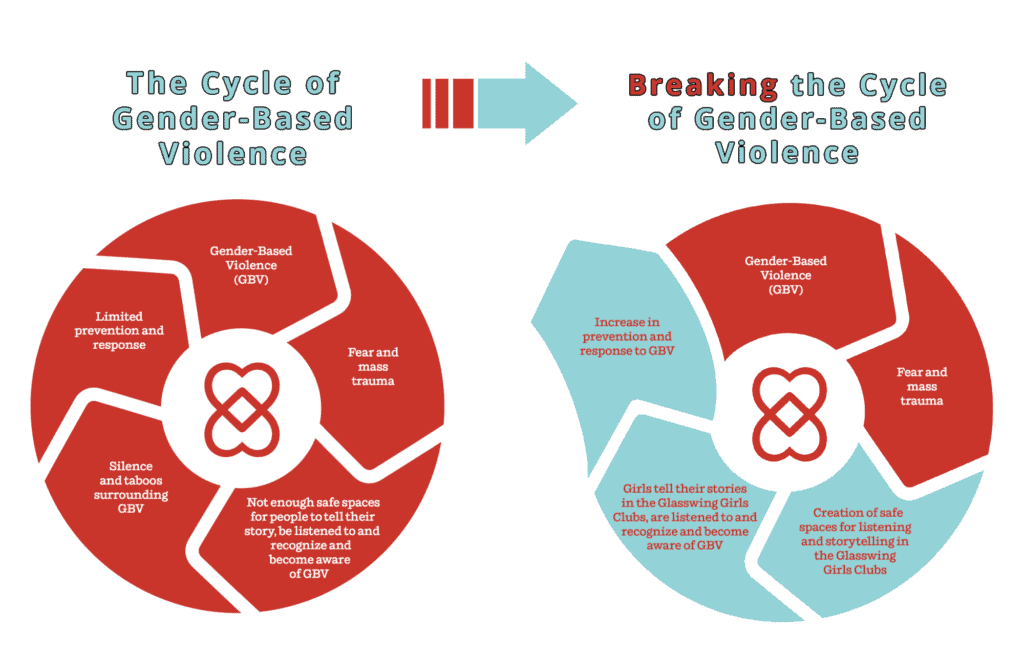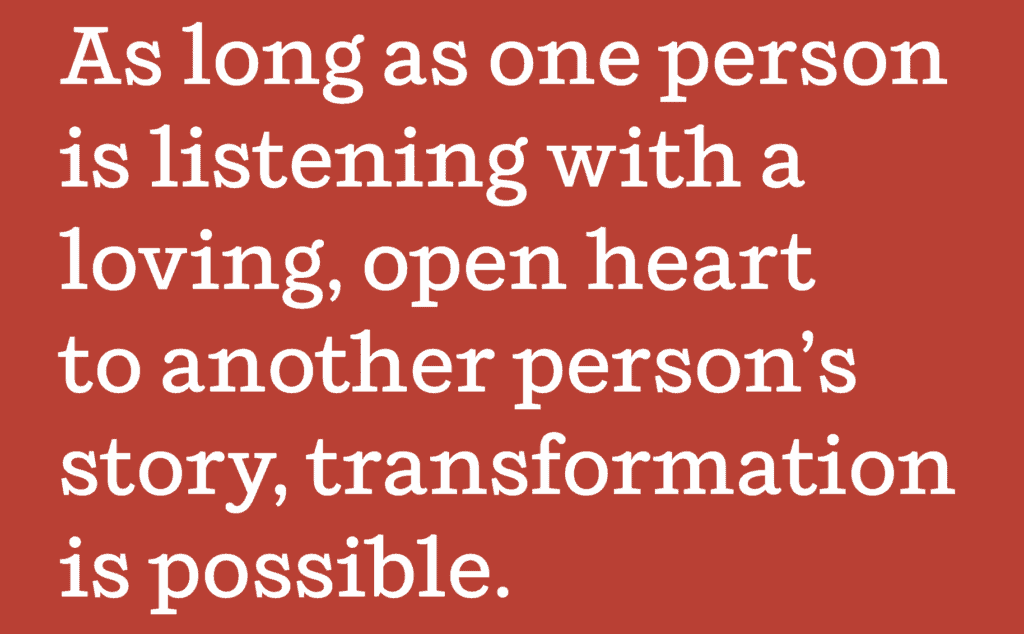A Q&A with Narativ Co-Founder Murray Nossel, PhD
El Salvador has one of the highest rates of gender-based violence and femicide in the world. Women in El Salvador are caught in a generational cycle of fear and silence that has prevented them from advocating for themselves. This cycle will continue until Salvadoran women are given a voice with which to break through the silence and tell their stories.

This is the current aim of Narativ co-founder Murray Nossel, PhD, who is working in conjunction with the NGO Glasswing to break the cycle of gender-based violence in El Salvador through community storytelling. The program trains social workers and mentors throughout the country to help members of the Glasswing Girls’ Club learn to listen and share their stories. The hope is that these girls will take the skills and confidence they’ve gained from the experience out into their broader community where they can begin to disrupt the cycle.
Murray, as the program’s lead creator, offered us some insight as to how the program came to be, what it looks like, and how it is already helping women and girls across El Salvador find their voice through the power of storytelling. Here is that conversation.
As an introduction, would you please provide a quick high-level overview of this project?
Murray Nossel: We were approached by the public affairs office at the U.S. Embassy in El Salvador. They presented us with the idea of initiating a story-based intervention to curtail the extent of gender-based violence in El Salvador. They basically asked us: “Can you develop a story-based program that we can use to counter this problem?”
The first thing I wanted to do was to really understand the history of violence in El Salvador. Violence comes from a set of circumstances and conditions, and so I did a tremendous amount of reading.
I realized that El Salvador has at least a 500-year history of violence, starting with the Spanish conquest of the country and the gradual decimation of the indigenous people of El Salvador. Then there was the Civil War in El Salvador, which lasted for a good 10 years.
My next step was to actually go to the country and talk to organizations that are already dealing with gender-based violence as well as the victims to see how they understand the problem.
So what did the program look like? What was the solution you put together to do this?
Murray Nossel: As I met with a wide range of organizations, I came up with a formulation: There has been an epidemic of silence that underpins the epidemic of violence. Women don’t talk about it because they are terribly worried about some kind of retaliation if they do. There is also a very widespread fear that talking about what’s happened is going to be retraumatizing. Both of these factors contribute to the silence.
This is where I felt our intervention would come into its own—the way to break the silence according to my method is to firstly create circumstances in which people are equipped to listen, then, secondly, to create a place where people can share stories about what’s happened to them.
The girls’ clubs run by Glasswing were the ideal scenario for us. These clubs are designed to empower the girls, to teach them how to honor themselves. So now, from a young age, these young girls are being taught to speak about themselves, to talk about their experiences, then when they age out of the girls’ clubs, they become counselors who can, in turn, train the other girls.
In this ideal venue, these people are already telling stories. But because of the epidemic of silence around violence, we can’t go in and say to the girls, “Tell the stories of your experience of violence.” If we did the same fears are going to come up that have led to the silence in the first place—particularly the fear of being overwhelmed by the story so you can’t function in life.
The question became what story prompt to use. From my work with the World Mother Storytelling Project, I already had the ideal springboard: Tell me a story about your mother. If you tell a story about your mother and it so happens that your mother is part of the demographic who are the main target of violence, it’s going to end up being a story about violence.
So this is how we developed the program. The girls first talk about anything they like to become familiar with telling stories about themselves. Then they learn how to tell stories about their mothers and their relationships with their mothers, ultimately breaking the silence epidemic around violence. This is also very important because it empowers the girls by helping them realize how enormously strong and resilient their mothers are.
Over the course of the year and a half of my work in El Salvador, we created a guidebook in English and Spanish that the Girls Club leaders and facilitators are now taking out into their various communities, applying the techniques and methods we created during the workshops.
Storytelling is key to everything you do, but why do you feel it’s so particularly important within the context of the work in El Salvador?
Murray Nossel: The first thing we know about storytelling is that it’s a hardwired brain function because it’s been used since the beginning of humanity to pass down information from one generation to the next.
Secondly, we know stories are also hardwired because they help us make sense of our lives. Why has this happened to me? Why have I gone through such terrible things in my life? Telling the story helps you to make some kind of sense out of it.
Finally, and most importantly I think, stories are the ideal way of breaking that silence. You’re saying what happened to you. In the very origins of my work with AIDS patients, the stories helped to change the face of that epidemic. This program in El Salvador is standing on the shoulders of all the work that I’ve done over the past 30 years using storytelling as the main instrument in advocacy.
What role do you feel storytelling plays in advocacy?
Murray Nossel: Storytelling humanizes the particular issue for the listeners. You can just look at statistics—numbers of people who died from AIDS, numbers of women who have been beaten by their husbands, etc.—but those numbers quickly become numbing.
We can’t relate to the number itself at all unless a story is connected to give, as Daniel Pink says, context enriched by emotion. When we hear the story of one woman and the trials she’s gone through, and then we find out this is happening to 5,000 women the number means something.
Story puts a face on a crisis. It touches us at the heart level so it’s not just cognitive information. Story imbues the emotions that move us to do something.
For those community leaders who may be interested in using the power of story in their own communities, what advice or first steps would you offer them?
Murray Nossel: The first step is to create safe spaces for listening and storytelling. When I talk about safe spaces, I mean physical environments in which people can come and share their stories with one another.
The second thing is to teach people how to listen to themselves and to one another. The goal is to help them feel they can bring kindness to themselves, listening to themselves with compassion in order for the story to be told.
Then, of course, to adhere to my method in terms of the rules of storytelling. Storytelling is saying what happened to you. When you say what happened to you it gives you perspective on the reality of what happened and takes away all those interpretations you may have put onto yourself.
Ultimately, we’re teaching people how to narrate their lives without judgment.
Thank you Murray for sharing your insights on this amazing program and how storytelling can be used to help break the cycle of gender-based violence in El Salvador, and hopefully someday all across the world!
If you would like to learn more about Murray and his work in story training, you can visit him here. To learn how Narativ can help to improve your workplace and your community, check out our website for all our story training services.





